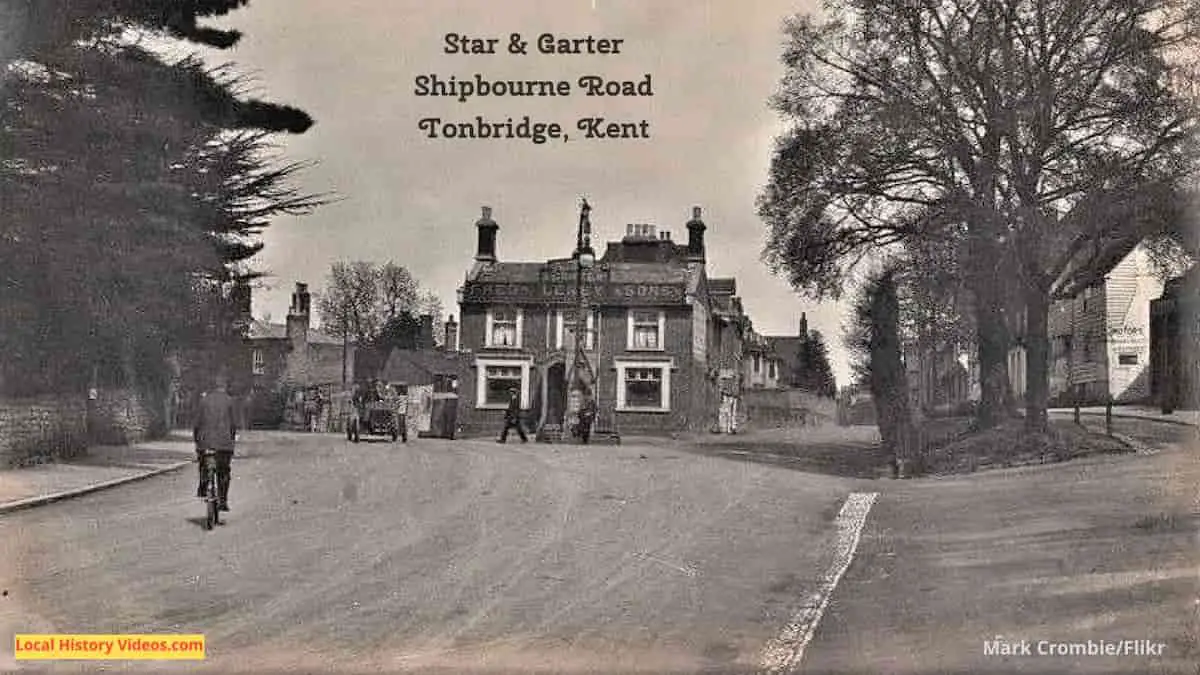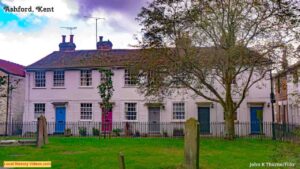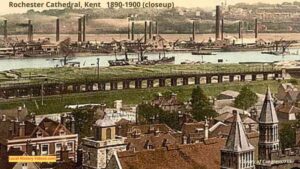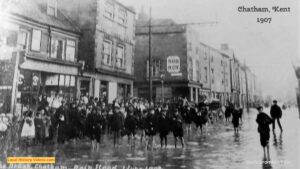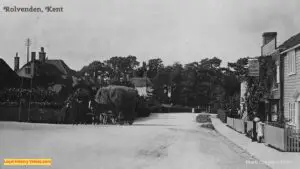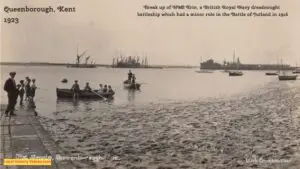Glimpse history through old images of Tonbridge, Kent.
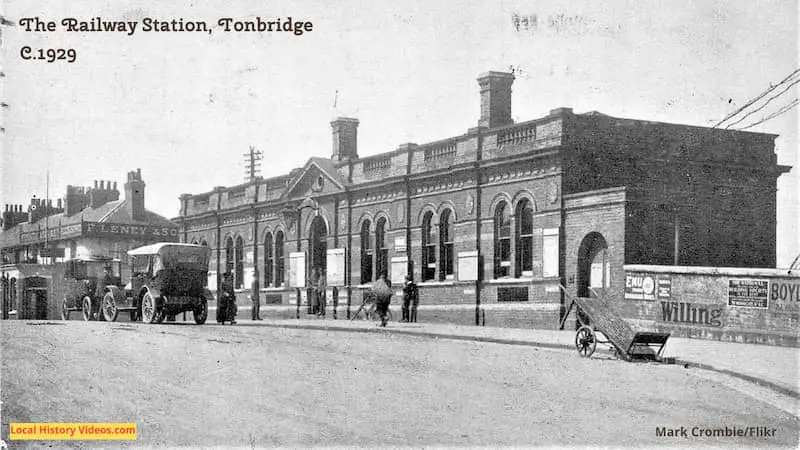
Tonbridge Floods 1955
As the snow melted in 1955, river levels rose and large areas of Kent were flooded.
This silent footage, less than two minutes long, show locations at Maidstone, Tonbridge and Yalding under water.
Thaw Causes Floods In Kent (1955) – British Pathé on YouTube
Historic Book
Extract from “The Archaeological Journal – Volume 36“
Published in 1879
Pages 378 & 379
THE FATE OF TONBRIDGE CASTLE .
It was reported , apparently on good authority , a few weeks ago , that the site of Tonbridge Castle was to let for building purposes . The report was so far probable that the ground about Tonbridge , and within reach of its well known Grammar School, is becoming much in request for villa building, very much to the advantage of the landowners there.
As regards the castle we are however glad to find that the report is unfounded , or founded only on the renewal of a lease of the premises , which therefore , it may be presumed , will remain without any serious alteration . It would indeed be more than a local calamity were the venerable remains of Tonbridge Castle to be treated as is just now the case with those of the Castle of Northampton.
For Tonbridge Castle is no work of yesterday , nor has it been the dwelling place of any ignoble lords. It is one of the oldest and most remarkable of those fortresses which preceded the coming in of the Normans , and of which William , with his military eye , at once perceived the value .
The subject of bitter contention between the Church and Baronage , and of more than one contest between its lords and their sovereign , it long descended in a line of illustrious families , and though in later days alienated and sold , its remains have till now always been treated with respect , and only recently have been recovered by the representatives in blood of its ancient owners . Surely they , of all men , should be the last to turn this chief seat of their ancestors to vulgar purposes , or to be accessory to its destruction by reason of the moderate addition of rent which might thereby accrue to them.
The Manor and Castle of Tonbridge seem to have been attached to the See of Canterbury long before the Conquest , and whether inhabited by the archbishops or , as was more probable , by one of their chief tenants , the castle must always have been a place of great importance , being not only a fortress of unusual strength , but so posted as to command the country between Dover , formerly the key of England , and Rochester , which , from its position on the Medway , was the advanced guard of London on the south.
It is a tradition that soon after the battle of Hastings , the Archbishop was induced, very unwillingly , to surrender Tonbridge to Richard Fitz Gislebert , in exchange for his Norman lordship of Brionne ; and one argument in favour of this exchange having taken place is , that the district attached to the castle has always been called the Leuca or Lewy ( Ban-lieu) of Tonbridge , a Norman appellation very uncommon in England .
There is no evidence that Tonbridge was included in the encroachments complained of by Lanfrane at the Shiregemote at Penendon in 1076 , but that the alienation was always regarded as illegal is clear , from its having been , according to Herbert of Boseham , the subject of a ” dura contentio ” with Becket , who claimed both castle and territory , ” que vulgo banleuga dicitur ” , together with the ” tower of Rochester ” , which probably is the military building of Norman fashion now attached to the north transept of the cathedral . Becket’s claim was resented by the whole baronage , and was unsettled at his death ; but it was revived by Archbishop Boniface , and compromised with him by Richard Earl of Gloucester , who agreed to do homage for four knights ‘ fees , with suit of court for the manor of Tonbridge and others , and to hold the offices of high steward and high butler to the archbishops.
The homage was to be rendered at each enthronization , and was made palatable by the prodigious fees and perquisites attached . As steward , 7 scarlet robes , 50 lbs , of wax for lights, 30 gallons of wine , livery of hay and oats for 80 horses for two nights , the dishes and salts placed before the archbishop at the feast , and after it the keep of 50 horses for three days ; as butler the fees were nearly the same , and included the arch bishop’s own cup . The fees , therefore , attached to the offices were commensurate with their rank and splendour .
This homage continued to be paid till the extinction of the male line of de Clare , when , in the partition , Tonbridge came to the sister who married Hugh d’Audley , whose representatives were the Earls of Stafford , Dukes of Buckingham , one of whom did homage in person when Archbishop Warham entertained Henry VIII and Charles V at Canterbury in 1520.
Since then the property has been alienated , and the greater part of the castle has been allowed to fall into decay . The great artificial mound , however , one of the finest in England , remains but little injured , and upon it may still be seen traces of the shell keep of the de Clare’s . The mound stood on the general outline or enceinte of the castle , and the curtain wall ran across it , and on one side still descends to the great gatehouse , a very fine Edwardian building. The outline of the great court with its banks and ditches may still be traced , and parts of the curtain remain . The ditches are full of water , and form a part of a great reticulation of water courses which belong to the infant Medway .
Recently the castle , it is understood , has been purchased by the Jerningham family , who hold the Barony of Stafford as heirs general of the Dukes of Buckingham , and therefore of the Audleys and of one heiress of de Clare.
To a stranger an appeal to preserve so ancient and celebrated a fortress might be made in vain , but the same ancestral feeling that led the Jerninghams to repurchase the property , would we feel sure induce them to make even a considerable sacrifice to preserve from further injury a place for so many centuries associated with the greatest of their ancestors.

